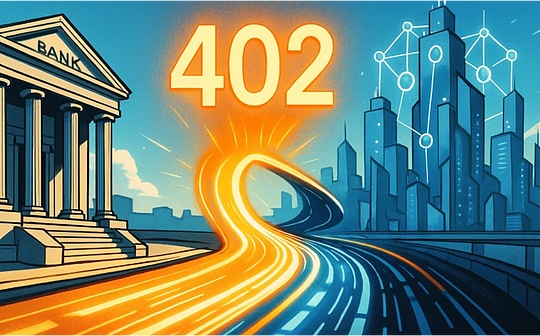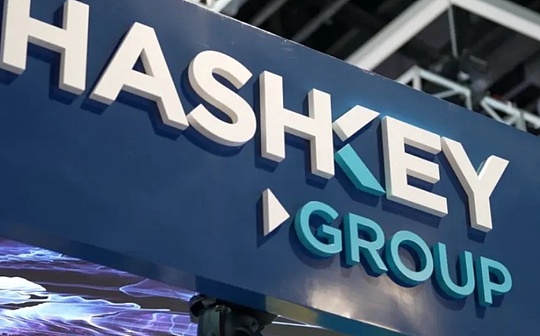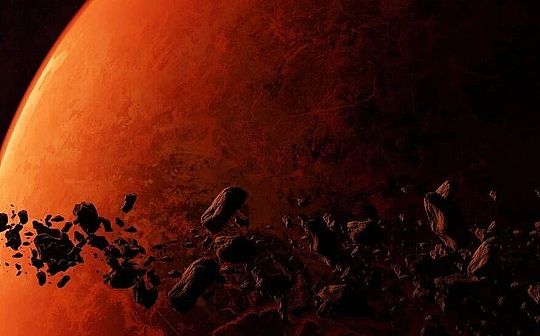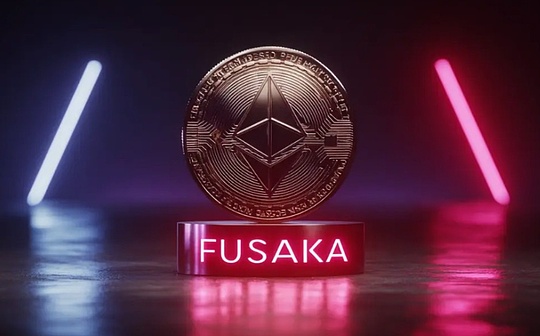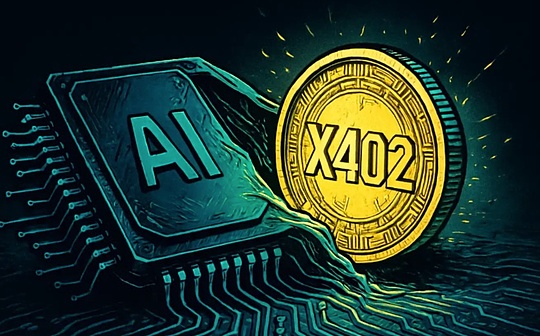
With the birth of the Ordinal protocol in 2023, Bitcoin ushered in a new type of asset -“inscription” as the “digital gold”.The product has unique value.
This kind of native asset issuance method on the first blockchain has quickly obtained the market sought after, which not only derives more asset issuance agreements such as BRC20, Atomical, Runes, etc., but also has well -known inscriptions such as ORDI, SATS, as well asNative NFT of many Bitcoin.
For a while, the Bitcoin ecology ushered in its own spring again, attracting a lot of funds, users and developers.However, after a period of development, more and more assets on Bitcoin are indeed increasingly realized, and everyone has gradually realized that Bitcoin is the limitations of Layer1.On the one hand, Bitcoin itself does not support smart contracts, so it is difficult to expand richer application scenarios on Bitcoin.
On the other hand, the performance and miners’ fees of Bitcoin have also become a huge obstacle for the further development of the Bitcoin ecosystem. During the active period of inscriptions, the transfer fee of Bitcoin will be rapidly increased, and even the normal transfer of Bitcoin, let alone if it isThere are more application scenarios, which will further cause the network congestion and long -term high miners.
By the way, the boom set off by the inscription was quickly passed on to the launch of Bitcoin’s expansion, and this also opened another popular track -Bitcoin Layer2.
From the pursuit of the evidence, where is Bitcoin Layer2?
Some old Bitcoin expansion solutions have been followed again, and more and more new Bitcoin Layer2 projects have been proposed. Among them, the Bitmap Tech, which is well -known in the direction of the inscription and is known as the BRC420 on the Bitcoin chain,While the team was not sold, the team took the lead in launching a Bitcoin Layer2, and this was Merlin Chain, who was later famous.
Merlin Chain was launched in February 2024 and quickly opened the pledge event Merlin’s Seal. In addition to Bitcoin and some inscriptions, the pledged targets also had BRC420’s blue boxes and other assets, which also caused the blue box to skyrocket.After undertaking the heat of the Bitcoin inscription, after the pledge was opened, Merlin Chain received a large number of TVL (data source: https: //geniidata.com/ordinals/index/merlin). The event launched less than 30 days. TVL exceeded 30 days.The maximum of US dollars, up to 3.5 billion US dollars, has become the popular Bitcoin ecological star project.
On April 19th, Merlin, which was highly anticipated, was finally listed, and its token Merl rushed to 2usdt, but then fell quickly, and continued to fall in the next few weeks. It has fallen by more than 80%, and it is close to the cost price.This performance directly surprised everyone.
Shortly after Merl went public, Merlin opened the unlocking function of BTC on April 25, and then its TVL cliff -like decline, now it has fallen to about $ 1.3 billion, a decline of over 60%.The blue box that had previously participated in the pledge also plunged less than 0.05bTC from the highest value of 1 BTC.
>
As a star project of Bitcoin Layer2, after listing, it encountered the double plunge of currency prices and TVL, which also injured many people who actively participated in Merlin.This can not help but make people doubt about Bitcoin Layer2. Is Bitcoin Layer2 a real potential narrative, or is it just a flash of hype?
In fact, the development of the entire blockchain industry is to continuously explore between doubts and recognition.For the expansion of the blockchain, Bitcoin is not the only ecology to explore.Ethereum as the veteran Dragon Er, the design is relatively early, and also faces the dilemma of having to expand.There must be a place worth learning.We might as well look forward to the development of Bitcoin Layer2 through the development of Layer2 in Ethereum.
Looking back at Ethereum expansion road
1. Learning and exploration
Ethereum’s capacity expansion schemes started to learn from Bitcoin’s experience and explored methods such as status channels, lightning networks, and side chains.
The status channel is like the two objects that want to trade A and B to open a passage that continues to update the state outside Layer1. No matter how many transactions in the channel, the two parties will not be affected by the performance and cost of Layer1.The reason why it is constantly updated is to upload the latest chain status to the main chain of Ethereum as the final settlement basis to prevent evil.This can indeed greatly improve efficiency and reduction rates, such as Connext Network to explore on the basis of the state channel.
However, it is limited to only the two parties in the passage, and the two parties also need to continue to update the status online, otherwise there will be risk of asset loss.
Lightning Network is iterated on the basis of the state channel. If the status channel represents the line between the two objects, then the lightning network connects a lot of cables to form a network.A and B are not in a channel itself, and multiple channels can be connected through the network.
Lightning network is equivalent to the network version of the state channel. On the Ethereum, the Lightning Network of Bitcoin has launched the Lightning Network of Lightning Network.However, the Thunderbolt is a chain network, and it does not support smart contracts. The main use scenario is the role of transfer payment.In addition, the Thunderbolt does not belong to the blockchain network, and its nodes are easily controlled by centralized groups and have certain risks, so it still has many shortcomings.
The subsequent launching side chain technology fills the lack of lightning networks. It is a form of blockchain and can also run smart contracts. Therefore, it has higher security and stronger scalability than the lightning network.
However, the side chain also brings new problems.Due to its independence, the side chain is only responsible for its own ledger, and the transaction results are only returned to the main chain, which may cause losses to the side chain for evil.For example, the side chain node tampering with transaction records or refusing to execute transactions may cause error results to return to the main chain, which will affect system security and reliability.Therefore, there is a problem of data availability in the side chain and has not been widely recognized.
At this stage, the expansion plan of Ethereum was basically practiced according to the idea of the capacity expansion plan of Bitcoin. However, after many attempts, Ethereum did not stop the exploration, and began to take a more advanced step.
2. Liu Dark Hua Ming
In 2017, Joseph Poon (one of the people proposed by the Lightning Network) and V God proposed a new expansion framework under the Layer2 chain of Ethereum -Plasma.Plasma refers to some design of the status channel and improved the shortcomings of the side chain. It adopts a tree structure of a tree structure that constitutes the Merkel tree by many sub -chains.Compared with the side chain, Plasma will have a beh handling of all transaction records that occur in these Plasma sub -chains, generate a Merkelgen, and spread it back to the main chain, so that the main chain can transaction on PLASMA transactions on PlasmaSupervise.This Merkelgen contains all the abstract information of transaction records that occur on the Plasma chain. The main chain can be used to verify the integrity and effectiveness of these transactions, thereby ensuring the legality and security of the transaction.
Although Plasma seems to solve some status channels and side chains, Plasma still has certain data usability problems, and Plasma does not support smart contracts, and its development is also in a bottleneck.
It seems that the solution of the hope is difficult to see the predicament. However, one year after the birth of Plasma, a new set of solutions are quietly born. It is this solution that opened the big outbreak of Layer2 in one fell swoop, and this is ——Rollup technology.
Although rollup is also constructed using the Merkel tree and the sub -chain structure, compared to Plasma, Rollup will pass all transaction records in the sub -chain to the main chain, instead of doing hash like Plasma.The nodes on the main chain can directly access and verify the detailed information of all transactions, not just the hash, so it provides sufficient data availability and transparency, thereby increasing the credibility and security of the system.
As Optimistic Rollup was proposed, Optimism, Arbitrum and other projects based on this technology were launched one after another.Because OP Rollup solves the problem of key sub -chain data availability, and can support smart contracts, its security and functionality are finally widely recognized.Among them, the two quickly constructed their own ecosystems. Since then, Ethereum Layer2 has finally taken the right track and ushered in an outbreak.
>
3. Flower blooming
The success of Layer2 and other Layer2 such as Optimism, Arbitrum also attracted more teams to explore different Layer2 solutions. For teams with strong technical strength, they may develop their own Layer2 solutions, but some teams may also want to run their own independent independent.Layer2, but not enough technology, and this demand is first discovered by the Optimism team.They have launched OP Stack of one -click Layer2 based on Optimism. Any team can make it easier to use this tool to publish a Layer2 belonging to its own.Other self -developed Layer2 teams are not willing to show weakness, and they have released Layer2 tools based on their own projects, such as Arbitrum Orbit of Arbitrum, ZKSYNC’s ZK Stack, Polygon’s Polygon CDK, and so on.
As a result, more Layer2 needs have been excavated and formed a feast of Layer2. At present, more than 50 Layer2 projects are counted on L2Beat. The development of Layer2 has entered a vigorous stage of development.
On the other hand, the current mainstream ROLLUP scheme often has the problem of sorters as evil.The sorter in Layer2 is mainly responsible for the transaction that will occur on Layer2 to sort in accordance with certain rules, package them into blocks, and then submit them to the main chain for confirmation.The sorter usually determines the order of the transaction according to some rules, such as trading costs, timestamps, etc., and ensure the effectiveness of the block.
However, because the sorter has the power to control the order of transaction, there may be sorters as evil, and intentionally adjust the transaction order in order to obtain more MEV returns.Therefore, some teams are starting to explore the solution of decentralized sorters to make ROLLUP more secure and mature.
The development of Layer2 of Ethereum is not difficult to find that Ethereum expansion is not smooth sailing, but we are exploring in a more decentralized, more data availability and safer direction.Only when a more secure and decentralized solution reaches a certain degree, it will get more funds and user recognition, and can develop more quickly.
In theory, the Layer2 of Bitcoin can also refer to the “chain” that belongs to its own development of Ethereum Layer2. It will also usher in the degree of security and decentralization.Such a hundred flowers bloom.
So what are the current Layer2 solutions of Bitcoin and what new changes are worthy of attention?Let us bring the development experience of Ethereum Layer2 and turn the perspective back to the Bitcoin ecosystem.
Dohaies and breakthroughs in Bitcoin ecology
1. The current dilemma of Bitcoin’s expansion
We have not seen many professional organizations or institutions entering the market in the current Bitcoin ecology, which is also because it has not achieved the satisfaction of these professional players at the degree of security and decentralization.
When we talked about the development of BTC Layer2, we released the draft of the Lightning Network White Paper in February 2015. This is also the earliest Layer2 “payment agreement” based on BTC, and it also led the subsequent people’s conception of Layer2 itself.However, everyone knows that the Lightning Network does not support smart contracts. Therefore, it is impossible to develop ecological applications related to Bitcoin on the lightning network, which can only be used as a payment expansion path.
Later, in 2016, a company that was particularly optimistic about doing L2 on BTC received a $ 55 million financing led by Tencent. This company was a well -known “Blockstream” that the industry players later. The L2 product they made is LIquid Network -—At the asset interaction with Bitcoin’s main chain through two -way anchoring technology, which is also a well -known BTC side chain.However, the LIquid’s Bitcoin cross -chain solution is relatively centralized. It uses 11 certified multi -signal nodes to host Bitcoin. The overall solution is similar to the alliance chain with a licensed mechanism, rather than a true public chain method.
At the same time as Liquid Network, there was another side chain called RSK. It was born earlier. It released a white paper in October 2015, but it did not become a solution to be later talked about.People mention it.
Also in 2016, developers named Giacomo Zucco proposed the preliminary concept of the RGB protocol based on the concept of Peter Todd.But it was not until 2019 that Maxim Orlovsky and Giacomo Zucco established the LNP/BP Standard Association to promote the development of RGB into actual application.Later in April last year, the RGB V0.10 version was released, which brought the function of fully supporting smart contracts to Bitcoin and Lightning Network. Since then, RGB has completed the important function of “landing”, and only the previous paragraph has the previous paragraph.The hot “RGB ++”, but whether it is RGB or RGB ++, there is still a distance from the real landing.
Of course, we must not forget another important role -Stacks, as a well -known Layer2, which is known as the real sense of supporting smart contracts and can achieve decentralized applications on Bitcoin. Since its launch in 2018, it has been BTC.The header of the Layer2 track, and with the advent of “Satoshi Nakamoto”, has earned the eyeballs of the industry, but the recent upgrade delayed that the fire was wiped out.
The BTC Layer2 solution closer to us is the BITVM proposed last year. Its implementation is exactly the same as that of Ethereum Optimistic, so it has received a lot of attention.However, BITVM’s smart contract runs under the chain, and each smart contract is not shared. The BTC cross -chain uses a traditional hash lock to anchor assets, and does not achieve a truly decentralized BTC cross -chain.
Through the above review, it is not difficult to find that BTC Layer2 actually develops far as Ethereum earlier, and these attempts are constantly verified. LaterMaking the development of BTC L2 is no longer the fire of the stars. We can see that through the figure below, we can see that the current status and representative projects of several mainstream BTC Layer2 solutions on the market. You can directly see the current dilemma (thanks to netizens for confessed)
>
According to public information, there are no less than 10 BTC Layer2 projects that have received financing this year, and they are still growing, which can be called a star track, but so far, the BTC L2 that has been taken in the real sense is that there are few BTC L2 recognized by the public.There is not a few, either trapped in the bottleneck of technical bottlenecks. Development is delayed, or it is high and low like Merlin, and the community is spitting. Because it is not decentralized, big funds are never dared to get on the car.Play a “cover”.
Just as we analyze the reason why ETH Layer2 achieved today’s achievements, it is very good to balance “decentralization” and “native nature”, so that funds are willing to enter the Layer2 ecosystem, thereby achieving the effect of “full flowers”. The current BTC currently BTCLayer2 is also in such a dilemma and needs to break the situation urgently.
2. Bybolia ecology breakthrough direction
Recently, the Bitcoin Hong Kong Conference is just over. The author was fortunate to go to the scene to listen to the sharing of well -known BTC L2 in these industries. On the one hand, he participated in the conference and answered his doubts on the one hand.Data availability and safer BTC Layer2 direction, two of which have widespread emerging BTC Layer2 entered the field of vision.
First of all, at the event site, the author and a little partner of BEVM talked about it. Although they saw the news that they had received Bitmain financing before and learned about the situation of Taproot Consensus because of studying RGB, it was not their team background and specific situation.Special clear.
In fact, they made Chainx in 2017. A BTC brought BTC into Boka and attracted more than 100,000 BTCs to enter the agreement interaction, but because of the 11 -person multi -sign scheme custody users, users of the 11 -person multi -sign scheme custody users usedBitcoin assets have a certain centralized risk.Later, because of Bitcoin’s famous Taproot upgrade, BTC brought more efficient, more flexible, and more private transmission methods to BTC, so that the CHAINX team saw the new BTC L2 construction method.network.
According to the official information, BTC network solutions are implemented through Taproot Consonsus, and Taproot Consensus is composed of 3 core functions: First of all, Schnorr Signature can allow Bitcoin to sign to 1,000 (compared to 11 people in CHAINXX,The scheme greatly improves security) to achieve decentralization of multiple signing addresses; secondly, the codeization of multi -sign management is implemented through MAST, not relying on people to sign, but relying on code drive; finally use Bitcoin Light Node Network to rely on bitcoin light nodes to light nodes of Bitcoin.Network consensus to drive more signatures, realizing a completely decentralized Bitcoin cross -chain and management.
Logically speaking, the implementation of Taproot Consensus is neither like a traditional side chain method, nor the hot RGB. It seems to open up a new technology to achieve logic. Of course, the author is not a professional and technical personnel.Judging on the code level, but at least a new solution is seen.In addition, the BEVM core developer also mentioned Bevm-Stack at the event. This is the same concept with OP STACK.Bring a new pattern.
Another project that I heard more mentioned in Hong Kong is MEZO, which has also completed $ 21 million in Series A financing in April, and investors are also very eye -catching. They are led by Pantera Capital.It can be said to be a representative of Western BTC Layer2 in the real sense.
MEZO uses TBTC as the foundation, and TBTC is a bridge between Links for several years for linking Ethereum and Bitcoin DEFI. TBTC allows any user with BTC or ETH to create TBTC by using a signature network.Unlike the previous solutions, the lock -up Bitcoin did not have a centralized custodian, a random selection of signatures, and selected different signature groups for each cast TBTC.Run the road, and at the same time to ensure the normal operation of the network by excess mortgage.
Therefore, TBTC, as an equivalent BTC value ETH, is the bridge between Bitcoin and Ethereum. BTC holders can deposit BTCs into smart contracts and receive TBTC.MEZO also achieves the function of BTC Layer2 through TBTC. Although it is innovative, it is more like a “technical sewing monster”. The financing team of this financing is the development team behind TBTC.
In addition, from the current known information, Mezo’s security method seems to be more signed, which is not very decentralized in a sense, which is questionable.
Of course, the trust of BTC Layer2 is the stumbling block that hinders development. Although the ancient saying clouds “the shield of the sketch of the child”, we cannot use the advantages of others to degrade each other’s disadvantages.How to establish an example is the goal of any project. Take a step back. If the BTC Layer2 can achieve the effect of ETH Rollup, why not the ecology can’t develop, why can’t you achieve a 100 billion -scale BTC Layer2?
Look forward to
Although the recent impact of macro financial changes has had a lot of impact on the crypto currency ecology, and the market value of Bitcoin has fallen to $ 1.2 trillion, this cannot stop the industry’s movement, and it will not allow people to develop the development of the Bitcoin ecology.Lost confidence, although projects like Merlin seem to open a “bad head” for the BTC Layer2 track, this will not prevent people from continuing to build BTC Layer2.
You must know that the development of ETH LAYER2 is also difficult, and it even needs a one or two rounds of cattle markets to consolidate this trend. Once the technical direction and technical path are confirmed, its rise index is the growth of geometric levels. At present, BTC Layer2 is probably here.During the difficult climbing period.
From the perspective of utility, we need to have more ecological projects like BEVM with “depending on trust”, “nativeness” and “more secure”. We also need to contribute fresh blood, as well as old players like Stacks, as well as Mezo like MezoSuch an innovative project to add bricks to the track. Only the ecological situation of all flowers appears, and BTC Layer2 can usher in a new spring.
“The pessimist is always correct, and the optimist is always moving forward.” As long as we go in the correct direction, we may probably see the Bitcoin ecosystem ushered in a real outbreak, rather than the hype of the flashy. After all, this hundreds of billions of gamesThe magic box of Dao has been opened. In addition to the expectations of we can do, we have more patience and persistence.




